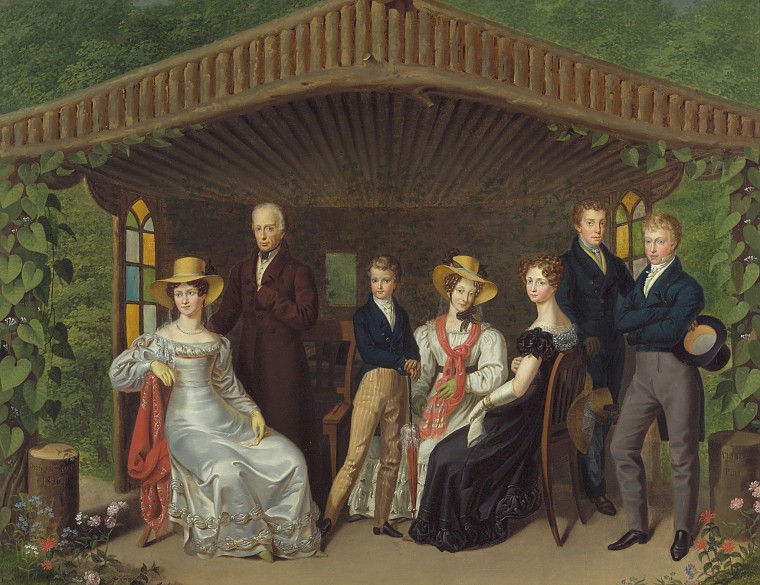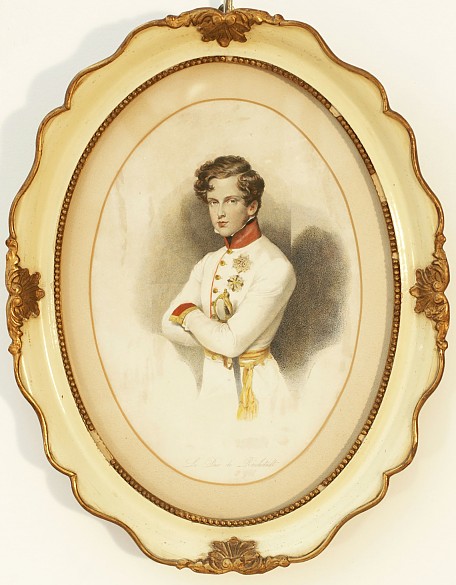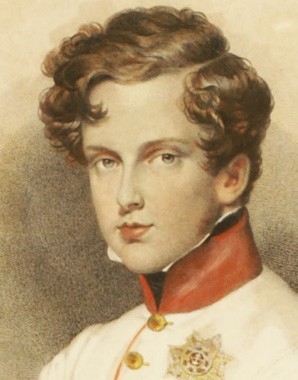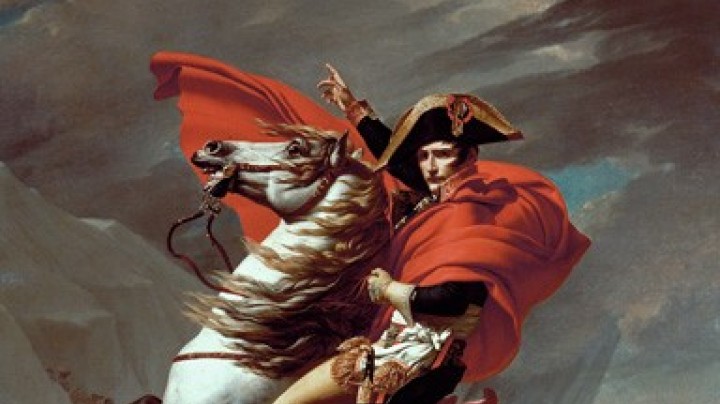Marie Louise after Napoleon’s fall from power
After parting from Napoleon Marie Louise put her life as Empress of the French behind her. Given the duchy of Parma at the Congress of Vienna, she led the life of a ‘merry widow’, making two further marriages.
When the tide began to turn against Napoleon in 1814, Marie Louise returned to Vienna, where she found herself in a difficult position. As the exiled wife of Napoleon she found herself coming increasingly under attack, having developed the affectations of an empress and being unwilling to abandon her French lifestyle in matters of fashion, culinary habits and comportment. Thus in her former home country she was soon regarded as spoilt and arrogant.
Contact with Napoleon was systematically impeded by the Viennese Court. Great efforts were made to ensure that the former empress grew apart from her husband. Soon Count Adam von Neipperg (1775–1829), who had a reputation for being a ladies’ man, was assigned to her entourage as cavalier-in-waiting in the hope that he would turn her thoughts in new directions. The plan worked. A scheme to reunite Marie Louise and Napoleon on Elba was initially postponed and then quietly shelved. Husband and wife were destined never to see each other again.
By the time Napoleon returned to Paris from exile on Elba and briefly seized power again, Marie Louise was no longer willing to return to him. This again emphasizes her lack of initiative and simple disposition. She was always biddable and obedient – at first towards her father, then her husband and finally once more towards her father.
At the Congress of Vienna Marie Louise was awarded the duchy of Parma together with Piacenza and Guastalla so that she would be provided for in keeping with her station and as a substitute for her lost status as empress. In 1816 she took up residence in Parma.
Her small son Napoleon Franz remained in the charge of his grandfather in Vienna. After initial protest Maria Louise accepted the separation from her child. Contact between the two became less and less frequent. Marie Louise was now living in Parma, where she had three children by her lover, Count Neipperg, whose existence was kept secret: Albertine (1817–1867), another daughter who died in infancy (b. 1818) and Wilhelm Albrecht (1819 or 1821 – 1895). Marie Louise married her long-term lover after Napoleon’s death in 1821. The marriage was kept secret and only officially announced after Neipperg had died. The children resulting from this union were legitimized by their grandfather and given the name Montenuovo – an Italianized form of Neipperg (Neuberg). Wilhelm Albrecht was ennobled as the Duke of Montenuovo by Emperor Franz Joseph in 1864. The last male representative of the Montenuovo line died in 1951.
After the death of Neipperg, Marie Louise made a third marriage in 1834 to Count Charles René de Bombelles (1784–1856), who had been sent by Metternich to Parma as first minister and head of the ducal household.
In 1831 Marie Louise was forced to leave her duchy in the face of unrest, to which military action by Austrian troops soon put an end. After her return she ruled benevolently, overseeing the reorganisation of the administration and public welfare system and becoming much-loved by the common people. Celebrated as the mother of her little duchy, she died at the age of 56 in 1847. She was interred in the Imperial Crypt of the Church of the Capuchin Friars in Vienna.














